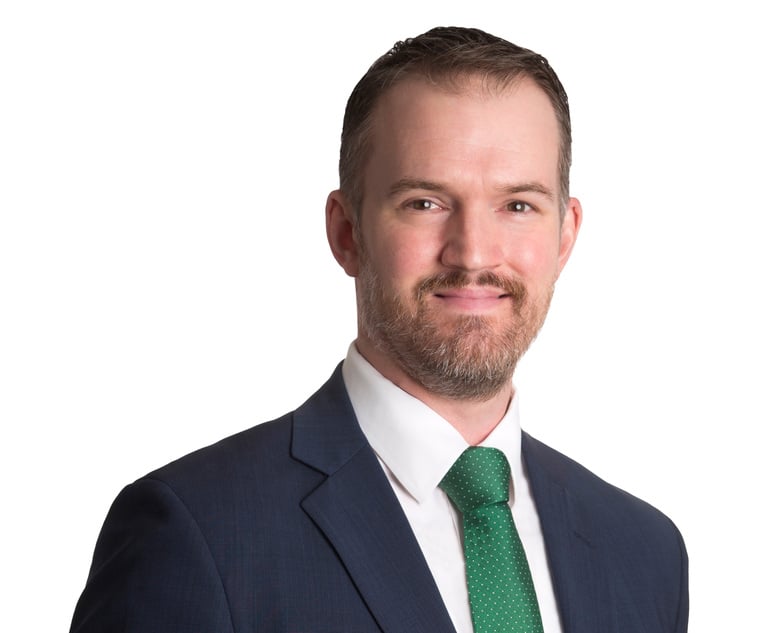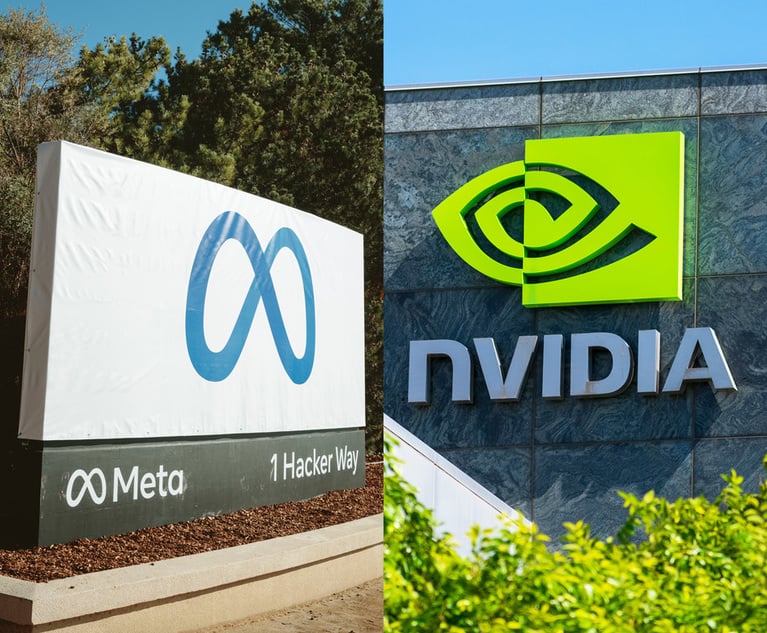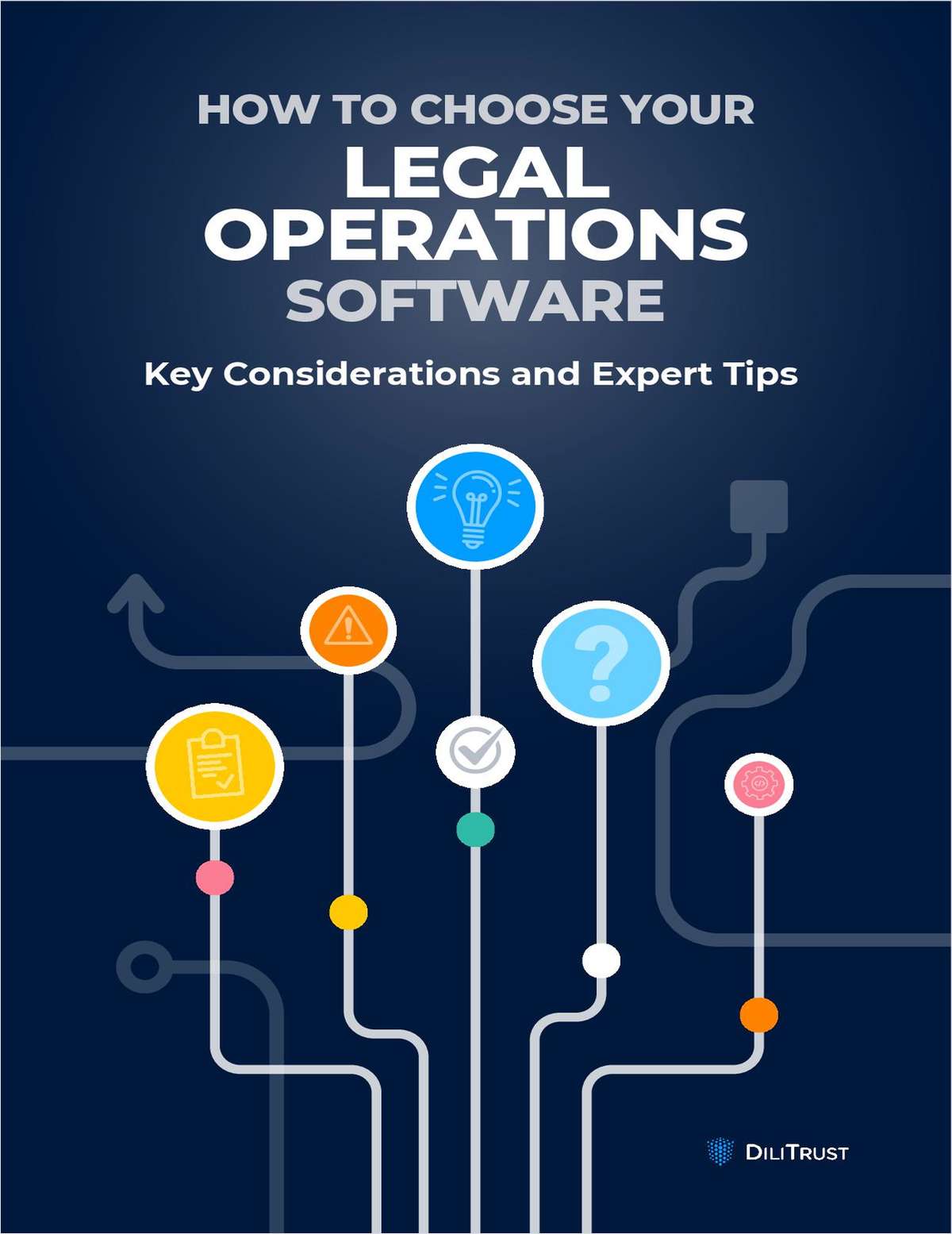 Photo: Shutterstock
Photo: ShutterstockIn Big Retail Bankruptcies, IP Lawyers Find a Niche
In many retail bankruptcies, a brand's identity can be a top asset.
December 26, 2019 at 02:05 PM
5 minute read
The original version of this story was published on The American Lawyer
The August bankruptcy filing of Barneys New York marked the downfall of a beloved luxury retailer. Within months, with Kirkland & Ellis and Katten Muchin Rosenman leading restructuring efforts, the company known for catapulting up-and-coming designers into the mainstream closed 15 of its 22 stores and announced the rest would shutter too.
But emerging from the brand's liquidation was a valuable asset. It wasn't the inventory—luxury goods selling at steep discounts—or real estate, which had become an ever-greater burden as rents rose. Instead, it was Barneys' intellectual property, which was purchased at the beginning of November for $271 million by Authentic Brands, the company that also owns the IP of other ill-fated retailers such as "tween" clothier Aérpostale, shoe store Nine West and Sports Illustrated.
"The IP is an enormous consequence in the way a business is run today," said Alan Behr, who chairs Phillips Nizer's fashion practice in addition to being partner in the firm's corporate and business law department and intellectual property practice. He is also editor-in-chief of the firm's fashion law blog. "[IP] is the goodwill pertinent to the trademarks—and it can be the largest item when things are sold off."
As high-profile retail restructurings have flooded the nation's bankruptcy courts in recent years, IP in many cases ends up being a valuable, sought-after asset—and the Big Law firms handling these high-dollar cases are tapping their experienced IP attorneys to navigate this element of the restructuring process.
This wasn't always the case, according to Behr. He said until recent decades, brands handled a larger part of the supply chain, meaning raw materials, machines and factory or warehouse space might be the most valuable assets. This started changing as companies began outsourcing more elements of production, he said. Today, when a company files for bankruptcy it might only have a few tangible assets, such as facilities, store fixtures, land and some inventory. Often, the IP is what holds the most value—and requires the most negotiation and finesse.
"A brand is a story, and for a brand to [successfully exit a bankruptcy], you have to have a story," Behr said, adding that when retail clients begin Chapter 11 proceedings, bankruptcy attorneys can work alongside their IP counterparts to find an effective union.
"[The two areas] need to have effective operations and marketing, which are things that require a firmwide vision and structure that supports collaboration," he said. "Isolated practice groups are effective in what they do, but they're missing opportunities to better serve clients."
Bankruptcy heavyweights in recent years and have tapped the IP groups at their firms to help navigate retail restructurings. Three Kirkland IP attorneys have billed for work so far in Barneys' bankruptcy, according to the firm's first interim fee application. Kirkland also handled the Toys R Us bankruptcy, which wound down earlier this year; 10 partners and 13 associates from the firm's IP litigation and technology and IP transactions groups billed for work on the case.
Nader Mousavi, chair of Sullivan & Cromwell's IP practice, explained that in bankruptcy cases, it isn't enough just to bring in an IP specialist; to best serve clients, firms need practitioners who understand how both practice areas work in relation to one another.
"The middle zone is finding IP experts who understand issues in the context of the bankruptcy, which is specialized," he said. "Some bankruptcy practitioners know the issues, but many don't have the full picture in those middle zones. It's an area which has the potential to fall through the cracks unless someone truly takes ownership of those issues."
An IP and transactional attorney, Mousavi said he first started learning about this complicated area of the law while working through the Kodak bankruptcy more than a decade ago.
"It was an extremely IP-intensive bankruptcy," he said. "In the restructuring process, those IP assets were viewed as the key to unlocking the liquidity necessary to bring Kodak back."
Through this experience, Mousavi said he became fascinated by the intersection between the IP and bankruptcy practices, and he credits his firm for giving him the hands-on experience to develop his expertise. He works closely with Sullivan & Cromwell's bankruptcy team and co-authored a paper in 2014 on the intersection of the two practice areas.
"Having strong restructuring and IP transactions practices under the same roof is the critical factor in providing access to these really interesting deals," he said. "In order to gain a full understanding of those issues and advise on them, you need the marriage of a strong restructuring practice and a strong IP practice. Without the other, I think either one would have a real problem."
Mousavi added that his IP work in the bankruptcy space has helped strengthen his practice and understanding of the law, which is helpful to his clients at different stages in the business life cycle.
"I kind of view bankruptcy as an asset test," he said. "It strips away a lot of the niceties of an agreement, and you're left with the core essence of the rights and obligations between parties."
He added: "Investing in understanding how these agreements would be treated in a bankruptcy has made me a better IP transactions lawyer when structuring them for companies that are currently solvent."
|Read More
Barneys Taps Kirkland, Katten for Chapter 11 as Retailers' Woes Continue
This content has been archived. It is available through our partners, LexisNexis® and Bloomberg Law.
To view this content, please continue to their sites.
Not a Lexis Subscriber?
Subscribe Now
Not a Bloomberg Law Subscriber?
Subscribe Now
NOT FOR REPRINT
© 2024 ALM Global, LLC, All Rights Reserved. Request academic re-use from www.copyright.com. All other uses, submit a request to [email protected]. For more information visit Asset & Logo Licensing.
You Might Like
View All

So You Want to Be a Tech Lawyer? Consider Product Counseling

Jones Day Client Seeks Indemnification for $7.2M Privacy Settlement, Plus Defense Costs
Law Firms Mentioned
Trending Stories
- 1Judge Denies Sean Combs Third Bail Bid, Citing Community Safety
- 2Republican FTC Commissioner: 'The Time for Rulemaking by the Biden-Harris FTC Is Over'
- 3NY Appellate Panel Cites Student's Disciplinary History While Sending Negligence Claim Against School District to Trial
- 4A Meta DIG and Its Nvidia Implications
- 5Deception or Coercion? California Supreme Court Grants Review in Jailhouse Confession Case
Who Got The Work
Michael G. Bongiorno, Andrew Scott Dulberg and Elizabeth E. Driscoll from Wilmer Cutler Pickering Hale and Dorr have stepped in to represent Symbotic Inc., an A.I.-enabled technology platform that focuses on increasing supply chain efficiency, and other defendants in a pending shareholder derivative lawsuit. The case, filed Oct. 2 in Massachusetts District Court by the Brown Law Firm on behalf of Stephen Austen, accuses certain officers and directors of misleading investors in regard to Symbotic's potential for margin growth by failing to disclose that the company was not equipped to timely deploy its systems or manage expenses through project delays. The case, assigned to U.S. District Judge Nathaniel M. Gorton, is 1:24-cv-12522, Austen v. Cohen et al.
Who Got The Work
Edmund Polubinski and Marie Killmond of Davis Polk & Wardwell have entered appearances for data platform software development company MongoDB and other defendants in a pending shareholder derivative lawsuit. The action, filed Oct. 7 in New York Southern District Court by the Brown Law Firm, accuses the company's directors and/or officers of falsely expressing confidence in the company’s restructuring of its sales incentive plan and downplaying the severity of decreases in its upfront commitments. The case is 1:24-cv-07594, Roy v. Ittycheria et al.
Who Got The Work
Amy O. Bruchs and Kurt F. Ellison of Michael Best & Friedrich have entered appearances for Epic Systems Corp. in a pending employment discrimination lawsuit. The suit was filed Sept. 7 in Wisconsin Western District Court by Levine Eisberner LLC and Siri & Glimstad on behalf of a project manager who claims that he was wrongfully terminated after applying for a religious exemption to the defendant's COVID-19 vaccine mandate. The case, assigned to U.S. Magistrate Judge Anita Marie Boor, is 3:24-cv-00630, Secker, Nathan v. Epic Systems Corporation.
Who Got The Work
David X. Sullivan, Thomas J. Finn and Gregory A. Hall from McCarter & English have entered appearances for Sunrun Installation Services in a pending civil rights lawsuit. The complaint was filed Sept. 4 in Connecticut District Court by attorney Robert M. Berke on behalf of former employee George Edward Steins, who was arrested and charged with employing an unregistered home improvement salesperson. The complaint alleges that had Sunrun informed the Connecticut Department of Consumer Protection that the plaintiff's employment had ended in 2017 and that he no longer held Sunrun's home improvement contractor license, he would not have been hit with charges, which were dismissed in May 2024. The case, assigned to U.S. District Judge Jeffrey A. Meyer, is 3:24-cv-01423, Steins v. Sunrun, Inc. et al.
Who Got The Work
Greenberg Traurig shareholder Joshua L. Raskin has entered an appearance for boohoo.com UK Ltd. in a pending patent infringement lawsuit. The suit, filed Sept. 3 in Texas Eastern District Court by Rozier Hardt McDonough on behalf of Alto Dynamics, asserts five patents related to an online shopping platform. The case, assigned to U.S. District Judge Rodney Gilstrap, is 2:24-cv-00719, Alto Dynamics, LLC v. boohoo.com UK Limited.
Featured Firms
Law Offices of Gary Martin Hays & Associates, P.C.
(470) 294-1674
Law Offices of Mark E. Salomone
(857) 444-6468
Smith & Hassler
(713) 739-1250









